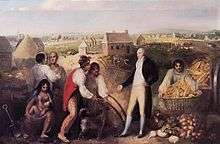
Indigenous groups that are recognized by ruling governments are generally not proportionally represented within the government. Some indigenous peoples around the world, however, have remained free of colonization. Most of these groups are considered uncontacted due to their isolated locations. ~ World Atlas

The rationale for choosing cultural rather than physical genocide was often economic. Carl Schurz concluded that it would cost a million dollars to kill an Indian in warfare, whereas it cost only $1,200 to school an Indian child for eight years. Likewise, the Secretary of the Interior, Henry Teller, argued that it would cost $22 million to wage war against Indians over a ten-year period, but would cost less than a quarter of that amount to educate 30,000 children for a year. Consequently, these schools were administered as inexpensively as possible. ~ Andrea Smith
Indigenous peoples, also known as First peoples, Aboriginal peoples or Native peoples, are ethnic groups who are the original settlers of a given region.
Quotes
- When the Europeans arrived, carrying germs which thrived in dense, semi-urban populations, the indigenous people of the Americas were effectively doomed. They had never experienced smallpox, measles or flu before, and the viruses tore through the continent, killing an estimated 90% of Native Americans.
Smallpox is believed to have arrived in the Americas in 1520 on a Spanish ship sailing from Cuba, carried by an infected African slave. As soon as the party landed in Mexico, the infection began its deadly voyage through the continent. Even before the arrival of Pizarro, smallpox had already devastated the Inca Empire, killing the Emperor Huayna Capac and unleashing a bitter civil war that distracted and weakened his successor, Atahuallpa.
In the era of global conquest which followed, European colonizers were assisted around the world by the germs which they carried. A 1713 smallpox epidemic in the Cape of Good Hope decimated the South African Khoi San people, rendering them incapable of resisting the process of colonization. European germs also wreaked devastation on the aboriginal communities of Australia and New Zealand.
- Jared Diamond, "Guns Germs and Steel" (1997) in "The Story Of... Smallpox – and other Deadly Eurasian Germs" Guns Germs and Steel Variables. Smallpox, PBS.
- The rationale for choosing cultural rather than physical genocide was often economic. Carl Schurz concluded that it would cost a million dollars to kill an Indian in warfare, whereas it cost only $1,200 to school an Indian child for eight years. Likewise, the Secretary of the Interior, Henry Teller, argued that it would cost $22 million to wage war against Indians over a ten-year period, but would cost less than a quarter of that amount to educate 30,000 children for a year. Consequently, these schools were administered as inexpensively as possible.
- Andrea Smith, "English Permanent Forum on Indigenous Issues Eighth session New York, 18 - 29 May 2009 Indigenous Peoples and Boarding Schools: A Comparative Study", prepared for the Secretariat of the United Nations Permanent Forum on Indigenous Issues, p.6
- The term “indigenous peoples” refers to the first humans who established a permanent life in a particular region or area of the world. Indigenous peoples may also be referred to as aboriginal peoples, first peoples, or native peoples. Every inhabitable area in the world has a specific group of indigenous peoples. These individuals may live in permanent settlements or prefer a nomadic lifestyle, in which they move from place to place within a particular territory.
The vast majority of indigenous peoples and their lands have been colonized throughout history, primarily by European nations. Today, in the post-colonial era, these regions have become independent countries, and the governments of these countries typically decide which indigenous groups to recognize and define which individuals may consider themselves indigenous. This practice has resulted in the marginalization of many indigenous peoples, losing their identities, traditions, and autonomy. Indigenous groups that are recognized by ruling governments are generally not proportionally represented within the government. Some indigenous peoples around the world, however, have remained free of colonization. Most of these groups are considered uncontacted due to their isolated locations.- “Who Are The Indigenous Peoples Of A Place?", World Atlas.
- Indigenous Peoples are culturally distinct societies and communities. The land on which they live and the natural resources on which they depend are inextricably linked to their identities, cultures, livelihoods, as well as their physical and spiritual well-being.
There are approximately 370 million Indigenous Peoples worldwide, in over 90 countries. Although they make up 5 percent of the global population, they account for about 15 percent of the extreme poor. Indigenous Peoples’ life expectancy is up to 20 years lower than the life expectancy of non-indigenous people worldwide.
While Indigenous Peoples own, occupy, or use a quarter of the world’s surface area, they safeguard 80 percent of the world’s remaining biodiversity. They hold vital ancestral knowledge and expertise on how to adapt, mitigate, and reduce climate and disaster risks.- “Indigenous Peoples”, World Bank, (Apr 02, 2019).
External links
This article is issued from
Wikiquote.
The text is licensed under Creative
Commons - Attribution - Sharealike.
Additional terms may apply for the media files.